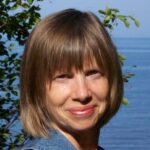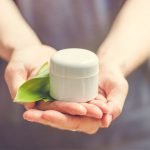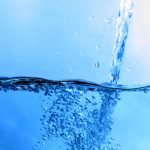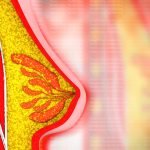Breast Thermography and Cancer: A Case Study
Katy Nelson, ND
The intention in presenting this case study is to increase the understanding of the use of breast thermography as a breast cancer screening tool and to further discuss its best applications.
Case Background
Marquette, Mich., in Michigan’s Upper Peninsula, a mostly rural region, provides safe harbor on Lake Superior. The region has drawn and retains iron ore and copper miners, foresters, educators, lodging and food providers, and healthcare workers. People are rugged and can be ethnocentric, and often are long lived independent of dietary patterns. Nonagenarians are not uncommon. Yoopers, as the people from this region are called, may be equally or more likely to embrace risk with magic and faith or with denial as others elsewhere. The land and water are powerful elements that drew me there, the region’s only ND.
Aug. 13, 2007, via phone: “SC,” a 63-year-old woman without a primary care doctor, afraid of conventional medicine and afraid she has cancer in her left breast, reported a history of fibrocystic breasts, irritation with pressure, and unexpected recent and non-responsive weight loss. Her fear is striking. I felt myself reach through the phone to embrace her strongly and encouraged immediate follow-up. I referred her to a local, compassionate physician who embraces complementary medicine.
Also seeing a brochure on breast thermography offered in a local “wellness” office directed by a “certified Meridian Stress Assessment (MSA) technician,” I sent one to SC without personal or professional recommendation.
Sept. 15, 2007: A thermography report for SC arrived with a cover letter from the wellness center director advertising the “approved by the FDA” status of the technology and their center as the region’s only location. The report itself is an “electronic medical” report by a doctor whose name is included among many others in the margin. The thermographer’s name is unaccompanied by credential.
Interpretation (complete): “There are asymmetric thermal patterns seen in all quadrants of the left breast with no distinct vascular patterns. There are some areas of hypothermia. These thermal findings may relate to her history of fibrocystic breasts and suggest an active process. Although not suspicious, close monitoring for any future changes is advised.
“There is no indication of any neovascularity. This study is suitable to be archived and compared with a repeat study in three months to establish a baseline, prior to annual testing.”
Discussion (partial): “The thermal findings in both breasts are considered within normal limits.” The only recommendation was for a follow-up exam in three months, prior to annual comparative studies.
Oct. 17 or 18, via phone: The referred physician (“Dr. S”) described a physical examination performed on Oct. 4 that revealed such “obviously abnormal breast tissue” that she referred SC immediately for ultrasound-guided biopsy of the left breast.
Resultant diagnosis: “Infiltrating ductal carcinoma of the left breast.” The pathology report indicated a 1.1cm tumor with the following characteristics: invasive, Nottingham grade 3/3, ductal carcinoma in situ (DCIS) grade 3/3, estrogen positive, progesterone borderline positive, lymphatic invasion positive, vascular invasion negative, microcalcification positive. It was noted that she also had a “palpable node in the left axilla … suspicious for metastases.” It was recommended (10/09/07) for her to get an oncologic evaluation for preoperative chemo followed by total mastectomy.
Anterior thermographic image: Showed a small area of heat two to three levels below “white hot” at the two o’clock position on the left breast. Four smaller, similar areas appeared on the anterior image over the eleven o’clock to two o’clock position on the right breast. Biopsy of a two o’clock suspicious mass of the right breast was also performed. Results were benign.
Dr. S was uncertain how SC would respond to the oncology recommendations. She was clear, however, that if SC elected an alternate course, Dr. S would withdraw from treating her further unless SC considered going to the Gerson Institute or Cancer Treatment Centers of America.
Oct. 17 or 18: I called SC to check in with her. Yes, she had followed through on the oncology visit. She had decided she was “not comfortable” with chemo or radiation and felt she would “look bad” after a mastectomy. She had cancelled her appointments, following prayer, for an MRI and brain scan related to ruling out metastases. She was clear that Dr. S. would be unable professionally to help her further if she elected other than the recommended oncologic care. She knew that any help I might give professionally was dependent on the connection with Dr. S. I encouraged her to consider the Gerson option and referred her to a woman in the region who is a Gerson-certified home helper. SC described a laying on of hands by a minister, feeling fine and “standing on [her] healing.”
Oct. 20, via phone: The Gerson-certified helper reported that she informed and referred SC to the Gerson Institute in Calif. SC reportedly resistant: no plan.
Oct. 27, via phone: Dr. S reported a history of progesterone cream use by SC; I called SC for more history. (Dr. S and I also discussed SC’s “fear” presentation of mixed paranoia and anxiety … a possible history of unresolved emotional abuse?)
SC’s memory was vague about progesterone cream use … She said she was advised to use it some five to seven years prior by “an herbalist,” used it continuously until about a year prior, always using “less than the recommended amount … afraid of using too much … no testing.” She had restarted using progesterone cream about six weeks prior to calling me, using one-third to one-quarter of the recommended dose. She had noticed nothing specific in “going through the change,” no changes in her fibrocystic breasts that she reported made self-exam difficult and “never had much trouble with hot flashes.” Unexpected weight loss despite stopping a weight loss product she first thought had “messed up [her] metabolism” was to her the telling symptom.
SC reported taking anti-fungals, eliminating or reducing carbs, using whey protein powder, taking an Artemisia-based product, using castor oil packs and colon cleansing therapy. Her care seemed intuition and family recommendation based.
Jan. 15, 2008, via phone: SC confirmed deciding against the Gerson protocol, was doing an OTC colon cleanse yielding tumor shrinkage; she felt better, less fatigued, more hungry; weight loss continued. A chiropractor, she reported, was working with her “glands and organs.” She reported tumor regrowth after stopping the OTC colon cleansing. Therapy thoughts were about IM treatment with an anti-tumor herbal.
Feb. 4, via phone: SC was continuing, to great benefit, her antifungal regimen and use of castor oil packs. Energy was improved, and she believes cancer and Candida, in her body, are linked. Her “shape [is] not quite right”; consulted with a DO about continued weight loss with abdominal bloating. The DO recommended an abdominal ultrasound; declined to assist with IM injections. SC asked about hydrazine sulfate as a “cancer-stopping” agent.
April 16, via phone: SC reported being three to five days into a phased diet to “starve cancer.” Her muscles were feeling differently. She reported obtaining hydrazine sulfate; began taking it three days before “the flu,” when she got “very dizzy and really sick.” She stopped, then restarted and got sick again. She reported doing better with probiotics. She also reported beginning several immune-supportive supplements and feeling better, yet still at least 15 pounds underweight. She remained hopeful.
July 29, via phone: SC reported two major concerns: confusing dietary information from multiple sources and fear. She physically experiences an “icy hot sensation” when she eats something “wrong” or makes a dietary mistake. Physically, she does not feel encouraged, and reports increased lymphatic swelling in her chest, but spiritually, she still believes in “complete healing.”
Summary: SC’s breast thermography interpretation, resultant discussion and recommendation completely missing her advanced breast cancer underscore the need for caution in using this diagnostic screening method. It also highlights several useful considerations:
- Age: Thermography is said to be most useful in women younger than 50: SC is 63
- Physiology: Thermography is based on heat output secondary to increased vascularity; SC’s pathology report is “vascularization negative”
- Sensitivity: 1) Dr. Horowitz’s article (in February NDNR) reported on a Canadian research report of DCIS stages I and II, where thermography was reported as 83% sensitive, just 2% less sensitive than mammography; SC had DCIS stage 3 (does sensitivity decline with increased staging?); and 2) Dr. Horowitz reported her review of research indicated thermography’s sensitivity between 70%-90%. What variables affect rates?
- Higher false positives for thermography: Dr. Horowitz reported that thermography “is not a viable standalone screening tool”; SC’s experience suggests the same
- Scope of Practice/skill level: While Dr. S. saw immediately that SC needed to be referred, the thermographer’s scope is technical, and the interpreting doctor is off-site
- Limitations: 1) Are images for “electronic interpretation” at a distance sufficient without direct reference to the patient or licensed medical staff’s accompanying notes? (see accompanying sidebar of notes from a conversation with the report provider); and 2) Dr. Horowitz’s article concludes that, “Thermography is especially useful for women who are on hormone replacement … or have fibrocystic … breasts”; SC used HRT and has fibrocystic breast disease
The American Cancer Society (www.cancer.org) says that although thermography has been around for “several decades … no study has ever shown that it is an effective screening tool for the early detection of breast cancer. It should not be used as a replacement for mammograms.”
Breast cancer is the second leading cause of death by cancers and the third leading cause of bone metastases. The cumulative effects of low-dose radiation are uncertain, and desirable to avoid. Breast thermography comparative screens may help by providing comparative studies through time for women ages 35-50, in addition to promoting prevention and “breast-conserving treatment” in early interventions. For an older woman, her own inner sense, her physician’s skill and care, and a history-related mammogram schedule may still be her best choice.
Regarding Thermography Reports
Peter Leando, DSc, DAc, PhD at Duke University, whose company issued the thermography interpretive report on SC, provided the following information with regard to his company and to thermography and its applications:
- The physicians who write the interpretive reports are board certified and licensed, and the process used is accredited
- Results of more than 2,000 clients daily, worldwide, are reviewed
- Thermography is a screening device, “a physiologic test” that may be useful in a differential process, but is not a stand-alone diagnostic tool nor a substitute for mammography
- The testing is done by trained technicians who, like x-ray or scan techs, are expected to leave all interpretation and advice to a reading physician
- Thermography examines function over structure; i.e., it is not designed to find tumors
- Using two studies conducted three months apart, a baseline unique “breast fingerprint” is arrived at for comparative future studies. A first study is therefore limited in the information it can provide; the best information is provided by screenings over time
- Specific physiologic change (inflammation, vascular pattern change) or asymmetric physiologic deviations (temperature differentials >1 degree Celsius) from the baseline fingerprint may be considered significant
- Thermography is particularly useful in identifying inflammatory and active breast processes that may promote or be associated with developing breast cancer (classic symptoms of discoloration, pain and nipple inversion)
- While breast thermography’s sensitivity is “conservatively 88%,” its specificity is lower: Existing inflammation or infections like mastitis or a “personal variant” may create false positives, especially in the absence of the full baseline measure
- The ideal client is 30-50 years of age, usually before the recommended age of a baseline mammogram, and before any physiologic accommodation
- 17% of women with breast cancer, screened with thermography, may get results “within normal limits” due to three main factors: the age of the client, a dormant process or, most commonly, an encapsulated tumor, usually with its own deep and permanent blood supply and without evidence of nitric oxide, perhaps a long standing process. These are not to be considered false negatives because baseline requirements, test design and test limitation factors have not been met first
- It is the policy of the American College of Obstetricians and Gynecologists that “any equivocal or abnormal thermogram should have clinical correlation with a mammogram”
- SC’s images show some lymph congestion, but without foci; the pathology found in her breast on biopsy is “long past the ‘developmental’ stages, which show the most change and activity”; nevertheless, having alerted the company to her biopsy results, a peer review will be conducted
 Katy Nelson, ND, a 1994 graduate of Bastyr, lives in Michigan’s wild Upper Peninsula out of a deep resonance with the natural environment. Her practice with local, national and international clients seeking low impact, sustainable wellness promotes “connecting the dots” from accurate identification of physical circumstance to spiritual and psychological states, and uses a client’s positive “unbending intent” as a primary wellness resource. She teaches, writes and advocates naturopathy broadly as a medical discipline of great depth. She serves at large on the Education and Outreach Committee and as a director of the Marquette Food Co-Op.
Katy Nelson, ND, a 1994 graduate of Bastyr, lives in Michigan’s wild Upper Peninsula out of a deep resonance with the natural environment. Her practice with local, national and international clients seeking low impact, sustainable wellness promotes “connecting the dots” from accurate identification of physical circumstance to spiritual and psychological states, and uses a client’s positive “unbending intent” as a primary wellness resource. She teaches, writes and advocates naturopathy broadly as a medical discipline of great depth. She serves at large on the Education and Outreach Committee and as a director of the Marquette Food Co-Op.










